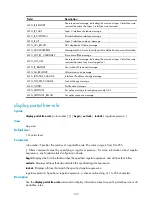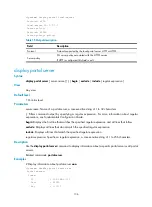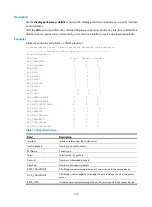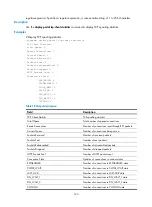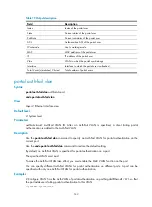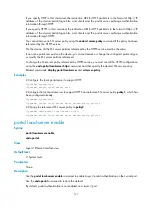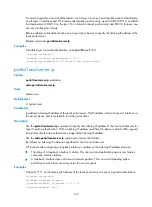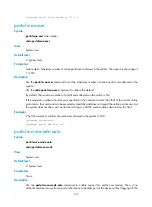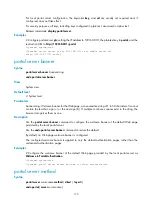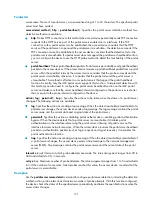
142
Table 19
Output description
Field Description
Index
Index of the portal user
State
Current status of the portal user
SubState
Current sub-status of the portal user
ACL
Authorization ACL of the portal user
Work-mode User's
working
mode
MAC
MAC address of the portal user
IP
IP address of the portal user
Vlan
VLAN to which the portal user belongs
Interface
Interface to which the portal user is attached
Total 2 user(s) matched, 2 listed
Total number of portal users
portal auth-fail vlan
Syntax
portal auth-fail vlan
authfail-vlan-id
undo portal auth-fail vlan
View
Layer 2 Ethernet interface view
Default level
2: System level
Parameters
authfail-vlan-id
: Auth-Fail VLAN ID. After an Auth-Fail VLAN is specified, a client failing portal
authentication is added to the Auth-Fail VLAN.
Description
Use the
portal auth-fail vlan
command to specify an Auth-Fail VLAN for portal authentication on the
current port.
Use the
undo portal auth-fail vlan
command to restore the default setting.
By default, no Auth-Fail VLAN is specified for portal authentication on a port.
The specified VLAN must exist.
To make the Auth-Fail VLAN take effect, you must enable the MAC VLAN function on the port.
You can specify different Auth-Fail VLANs for portal authentication on different ports. A port can be
specified with only one Auth-Fail VLAN for portal authentication.
Examples
# Configure VLAN 5 as the Auth-VLAN of portal authentication on port GigabitEthernet1/0/1, so that
the port adds users failing portal authentication to this VLAN.
<Sysname> system-view





